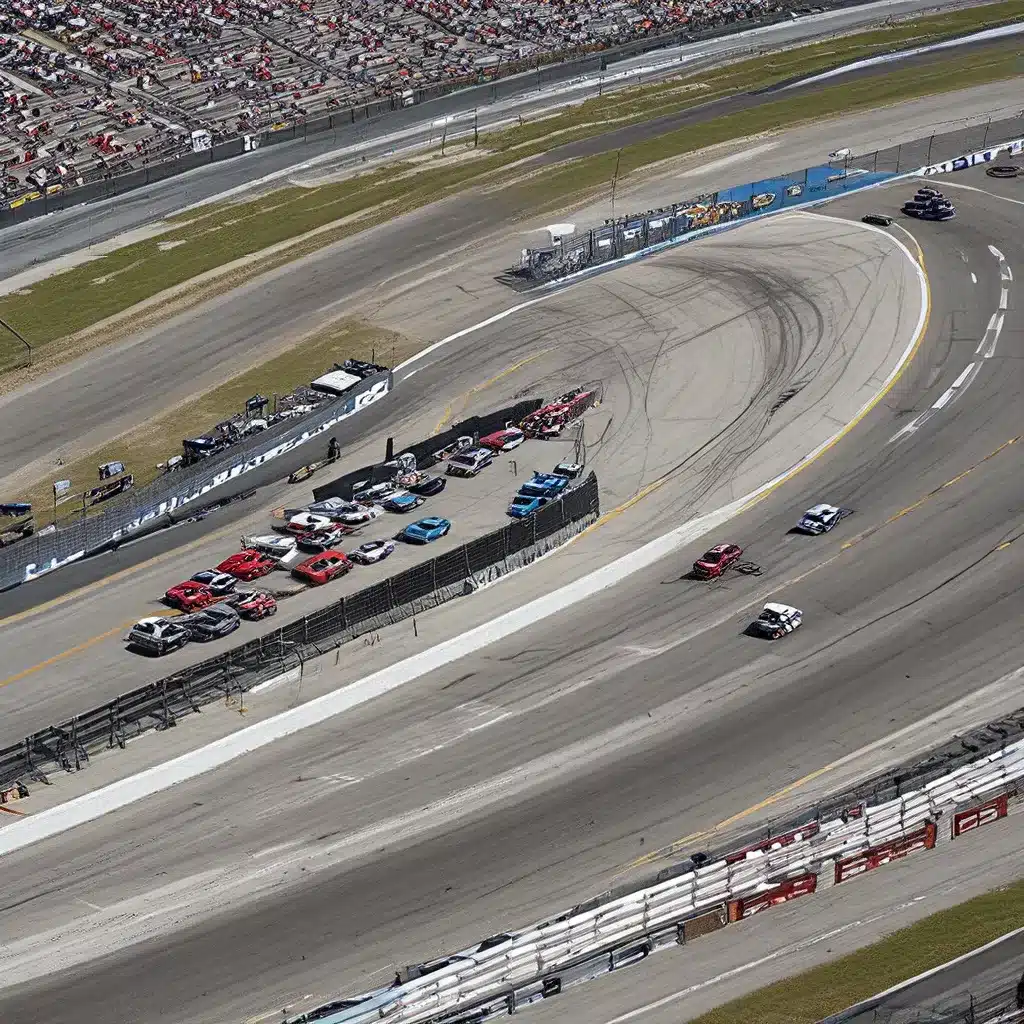
The Iconic Birthplace of NASCAR
Nestled on the sun-drenched coastline of Daytona Beach, Florida, the Daytona International Speedway stands as a towering monument to the unbridled pursuit of speed. This legendary racetrack has long been revered as the spiritual home of NASCAR, the quintessential American motorsport that has captured the hearts and imaginations of racing enthusiasts worldwide.
Opened in 1959, Daytona International Speedway was born out of a vision to create a racing facility that could challenge the world’s best drivers and showcase the raw power of high-performance automobiles. Bill France Sr., the founder of NASCAR, spearheaded the construction of this awe-inspiring facility, which quickly became the centerpiece of the organization’s annual schedule.
The Unique Design of Daytona
What sets Daytona International Speedway apart from other tracks is its unique oval design, featuring steep, high-banked turns that allow drivers to maintain blistering speeds throughout the entire circuit. With a total length of 2.5 miles (4 km), the track is a true test of both automotive engineering and human skill, as drivers must navigate the treacherous turns at speeds exceeding 200 mph (320 km/h).
The track’s steep banking, which reaches an impressive 31 degrees in the turns, is a key feature that enables the high-speed action that has become synonymous with Daytona. This design, pioneered by legendary engineer Bill France Jr., has become a hallmark of Daytona, setting it apart from the more gradually banked oval tracks found at many other NASCAR venues.
The Legendary Races at Daytona
Daytona International Speedway has played host to some of the most iconic and thrilling races in motorsports history. The Daytona 500, the season-opening event for the NASCAR Cup Series, is arguably the most prestigious and widely-watched stock car race in the world. Held annually since 1959, the Daytona 500 has become a cultural phenomenon, attracting a global audience and cementing Daytona’s status as the “Superbowl of Stock Car Racing.”
In addition to the Daytona 500, the speedway also hosts a number of other high-profile events, including the Coke Zero Sugar 400 (formerly the Pepsi 400) and the Rolex 24 at Daytona, a prestigious endurance race that challenges the world’s top sports car teams and drivers. These events, along with the numerous other races and activities that take place at Daytona throughout the year, have solidified the track’s reputation as a true mecca of motorsports.
The Aura of Daytona
Beyond its unparalleled racing history, Daytona International Speedway has an undeniable aura that captivates all who step foot on its grounds. The sheer scale of the facility, with its towering grandstands and expansive infield, is enough to inspire a sense of awe and wonder in even the most seasoned motorsports enthusiast.
The track’s unique architectural design, featuring a distinctive tri-oval shape and soaring grandstands, has become an iconic part of the Daytona experience. Visitors are often struck by the steep banking of the turns, which can be a daunting sight for those unaccustomed to the scale of the facility.
The Evolution of Daytona
Over the decades, Daytona International Speedway has undergone a number of transformations and renovations to keep pace with the ever-evolving world of NASCAR and motorsports. In 2016, the track underwent a massive $400 million overhaul, known as the “Daytona Rising” project, which modernized the facility and enhanced the fan experience.
This comprehensive renovation included the addition of new, state-of-the-art grandstands, as well as the creation of a series of interactive fan zones and social spaces that have further cemented Daytona’s status as a must-visit destination for racing enthusiasts. The track has also remained at the forefront of safety innovation, with the implementation of energy-absorbing walls and other cutting-edge safety features to protect both drivers and spectators.
The Enduring Legacy of Daytona
As the spiritual home of NASCAR, Daytona International Speedway has an enduring legacy that extends far beyond the confines of the racetrack. The track has become a cultural icon, representing the unbridled spirit of American motorsports and the unwavering dedication of its loyal fanbase.
From the roar of the engines to the electric atmosphere of race day, Daytona International Speedway has the power to transport visitors to a bygone era of racing, where the pursuit of speed was the ultimate thrill. As the Old Stadium Journey website aptly describes, Daytona is a “high-banked shrine of speed” – a fitting testament to the track’s enduring legacy and its status as one of the most iconic and revered motorsports facilities in the world.
